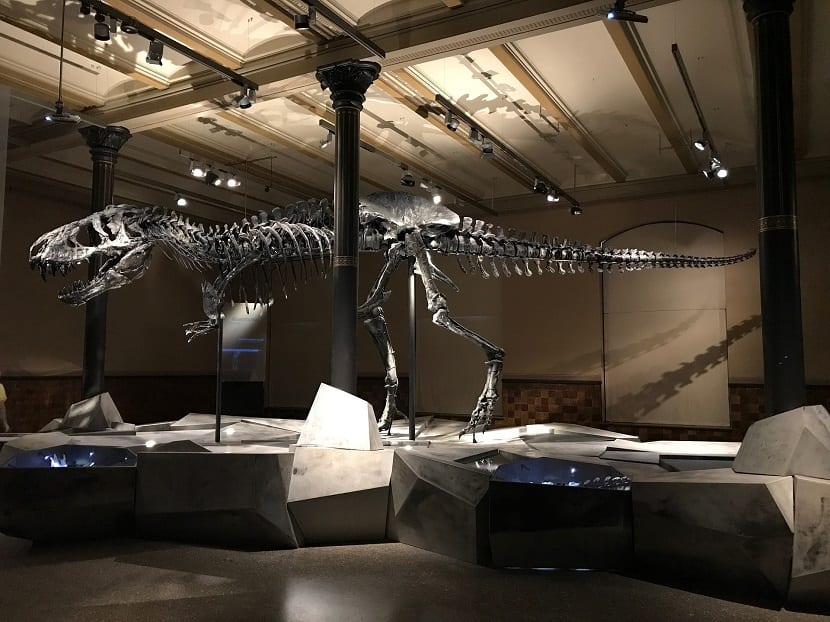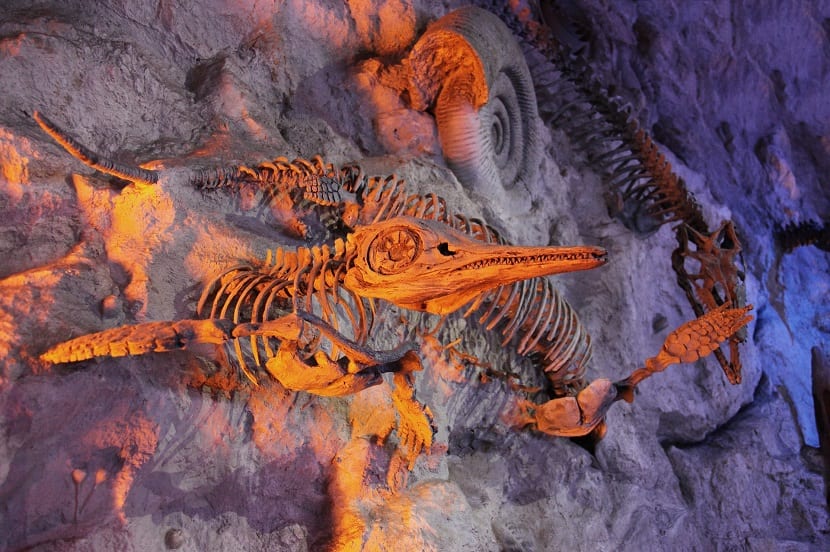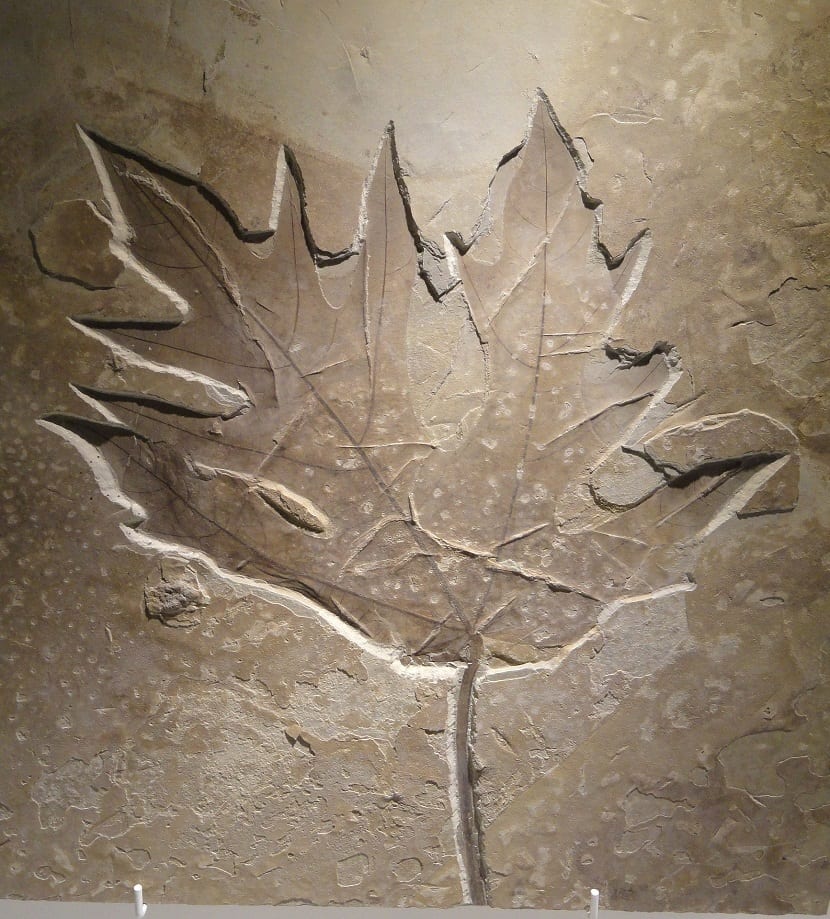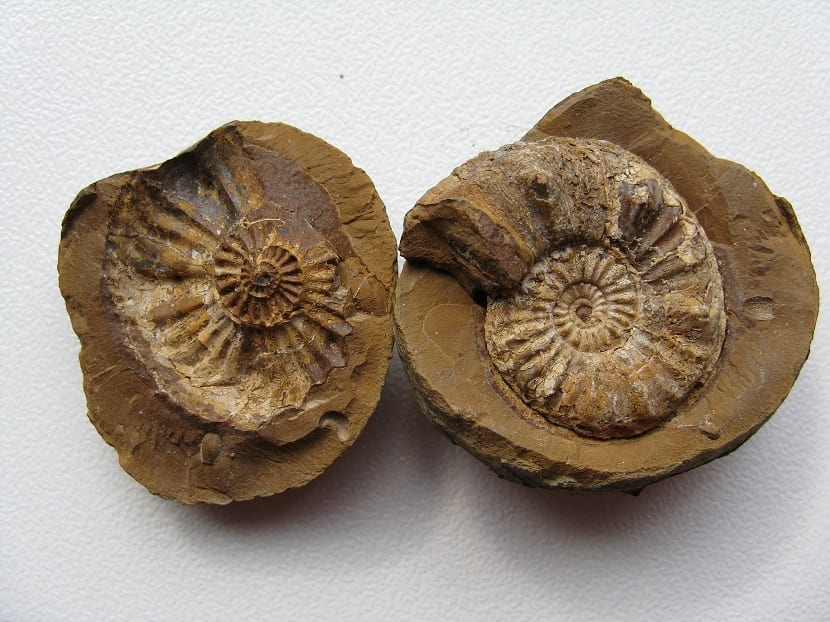
Everyone at some point has liked hearing stories of dinosaurs and past creatures that inhabited the Earth. Investigating, it is inevitable to find ourselves in front of fossils, the most direct evidence of creatures that became extinct millions of years ago.
Thanks to them, we can reconstruct what animals inhabited at that time. Like a great puzzle that gradually rebuilds itself and shows us how things were before. But what exactly takes a creature of flesh and bones to turn to stone?
What is a fossil?
Fossil comes from the Latin word "fossilis", which means "excavated." The remains of organisms as well as their activity, for example, fossilized tracks, can be considered as fossils. These remains are usually preserved in sedimentary rocks, which may have undergone transformations in their composition. One is by diagenesis, which is the formation of a sedimentary rock from sediments. The other is by dynamic metamorphism, which is when a rock undergoes a transformation without change of state due to pressures and temperatures different from the one that originated it.

To be called a "fossil", it must be at least 10.000 years old. That is, we can find them both in the Holocene, which is the current time, until the Archaic Aeon, a little over 4 billion years ago. Their size can vary from what they contain, from micrometers for fossilized bacteria to many meters like huge dinosaurs. Of course, there are fossils of very low weight up to others of many tons.
How are they formed?
The formation of fossils can occur by various types of fossilization processes. The most common is that of petrification, called by mineralization. Other processes would be carbonization, casting and molds, and mummification. Next we will see their differences.
Formation by mineralization
The first thing to disappear when an animal dies is its organic remains. This process, which is the most common in the formation of a fossil, leaves everything that is the skeleton, exoskeleton, bones, teeth, etc. in place. If nothing else happens, over time, little by little these remains are being buried. The water that seeps even though there are several layers of earth on top, carries minerals to the skeletal remains that are found there below. Gradually, and with the passage of time, it causes the remains to be turned into stone. For this reason it is also called petrification.

Example of fossil by carbonization
Carbonization formation
A loss of gaseous substances, mainly oxygen, hydrogen and nitrogen, leaves a carbon film in place. This type of fossilization is more frequent in plants especially, such as when, for example, the leaves or branches are crushed between rocks.
Forming by casting and molds
This type of fossil occurs as a negative or positive impression. That is, in negative it would be an inverted copy of what it was and in positive it is a copy as it was. In this regard, they can be presented in 3 ways:
- Exterior: It forms a negative impression of the organism, it can be from the skin of an animal or the surface of a shell, for example. The body is covered on its surface by some material, such as clay. With the passage of time the rock preserves the profile of the animal that was covered.
- Interior: It occurs when the material enters the body, in the example of the shell for example, it fills up over time with the material. The animal decomposes over time, and the materials trapped inside obtain the shape of the animal that was.
- Against mold: It is an identical copy of the animal, although it is more difficult to produce. For this to happen, a first mold must exist internally or externally, and thus, a second mold at the opposite site, create a replica of how the organism was.

Formation by mummification
In this process the organism is preserved almost as it existed. For this, it is necessary that the animal is trapped in the material, and that it is resistant to decomposition and also waterproof. For example, a mosquito trapped in amber, or a mammal trapped in ice.
And now to investigate! We hope that from now on when you see a fossil, you can also see the process that has made it possible!